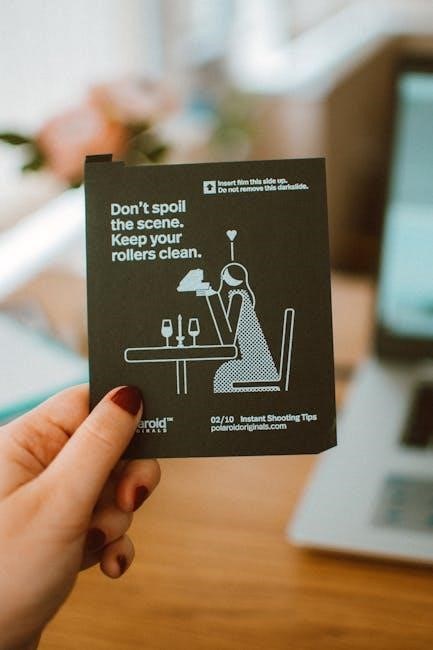Imperial knives are cherished for their durability and heritage. This guide offers detailed insights into identifying these knives, exploring their historical background, key features, and collectible aspects for enthusiasts and collectors alike.
1.1 Overview of Imperial Knife History
Imperial Knife Company, founded in Providence, Rhode Island, has a rich history dating back to the early 20th century. Known for producing high-quality knives, the company gained fame for its durable designs and innovative features. Imperial knives were widely used for both everyday and specialty purposes, such as fishing and camping. The company’s production spanned several decades, with significant contributions during the mid-20th century. Over time, Imperial merged with other brands, and its manufacturing shifted overseas, yet its legacy remains cherished among collectors and enthusiasts of vintage cutlery.
1.2 Importance of Proper Identification
Proper identification of Imperial knives is crucial for determining their age, model, and value. Accurate identification helps collectors assess rarity, condition, and historical significance, ensuring authenticity. It also aids in understanding the knife’s production era, materials, and unique features. For enthusiasts, correct identification enhances the ability to appreciate the craftsmanship and heritage behind each piece. This process is essential for collectors seeking to evaluate and preserve their Imperial knives effectively, ensuring they maintain their value and historical integrity over time.

Key Features for Identifying Imperial Knives
Imperial knives are recognized by their blade materials, handle designs, and mechanisms. These features, including stainless steel blades and distinctive tang stamps, help in accurate identification.
2.1 Blade Characteristics and Materials
Imperial knives feature blades made from high-quality carbon or stainless steel, known for their durability and edge retention. Stainless steel blades resist corrosion, making them ideal for outdoor use, while carbon steel blades offer superior sharpness but require more maintenance. Blade types vary, including drop-point, clip-point, and straight-edge designs, with lengths typically ranging from 2 to 4 inches. Vintage Imperial knives often showcase precise blade grinding for consistent performance. The heat-treated steel enhances hardness and flexibility, ensuring reliability for tasks like fishing, camping, or everyday carry. Vintage models from the 1940s to 1960s are particularly sought after by collectors for their exceptional craftsmanship.
2.2 Handle Designs and Materials
Imperial knives feature a variety of handle designs, often crafted from durable materials like stainless steel, celluloid, or hard plastics. Many vintage models showcase intricate patterns or textures, enhancing grip and aesthetics. Handles may include functional elements such as scaling edges or bottle openers, catering to specific uses like fishing or camping. The use of celluloid, a popular material in mid-20th-century Imperial knives, offers a classic appearance while maintaining durability. These designs balance practicality and style, making Imperial knives both functional and collectible.
2.3 Mechanism and Locking Systems
Imperial knives are known for their robust mechanisms and locking systems, ensuring reliability and safety. Many feature lockback designs, while others use slip-joint or liner locking systems. Vintage models often include functional elements like tip screws for adjusting tension. Some knives incorporate additional tools, such as bottle openers or screwdrivers, enhancing utility. The mechanisms are typically made from durable materials like stainless steel, ensuring long-lasting performance. These features contribute to the knife’s functionality and appeal, making them popular among both users and collectors.

Historical Markings and Stamps
Imperial knives feature distinctive markings like tang stamps, blade engravings, and handle logos. These markings often include “IMPERIAL” or a crown symbol, aiding in identification and verifying authenticity.
3.1 Tang Stamps and Their Variations
Imperial knives often feature tang stamps with “IMPERIAL” or “IMPERIAL STAINLESS,” indicating the manufacturer and blade material. Variations include “IMPERIAL PROV R.I. USA” for models made in Providence, Rhode Island. Some tangs display model numbers like “51” or “62,” aiding in specific identification. These stamps evolved over time, with earlier models showcasing simpler designs and later ones incorporating more detailed markings. Collectors use these stamps to verify authenticity and determine the production era of Imperial knives, making them a crucial element in identification.
3.2 Blade Markings and Engravings
Blade markings on Imperial knives typically include “IMPERIAL” or “STAINLESS,” indicating the manufacturer and blade material. Some blades feature engravings like “MADE IN USA” or model-specific designations. These markings help verify authenticity and determine the knife’s production era. Engravings may also denote special-purpose knives, such as fishing or camping models. Collectors often use these markings to identify rare or vintage Imperial knives, as variations in engravings can signify different production periods or special editions.
3.3 Handle Stamps and Logos
Imperial knife handles often feature stamped markings or logos that aid in identification. Common materials include celluloid, metal, and wood. Handles may bear “IMPERIAL” or “IMPERIAL USA” stamps, confirming the manufacturer. Some models, like the Imperial Camp Knife, have specific logos or patterns. These stamps and logos vary by production era and model, helping collectors determine authenticity and rarity. Handle markings, combined with blade and tang stamps, provide a comprehensive identification of Imperial knives, making them valuable for collectors and enthusiasts alike.

Popular Models and Their Identification
Imperial offers iconic models like pocket knives, folding knives, and specialty knives for fishing or camping, each with unique features appealing to collectors and outdoor enthusiasts.
4.1 Imperial Pocket Knives
Imperial pocket knives are renowned for their compact design and functionality. Many feature single or multiple blades, often with additional tools like bottle openers or screwdrivers. Vintage models, such as the 1940s-50s Imperial Single Blade Fishing Knife, showcase a 3 1/4-inch blade with a fish scaling edge. These knives often bear tang stamps like “IMPERIAL” over “STAINLESS” and were produced in Providence, R.I. Collectors prize their durability and historical significance, making them highly sought-after items in knife collections.
4.2 Imperial Folding Knives
Imperial folding knives are celebrated for their portability and durability. They often feature multiple blades and tools, such as screwdrivers or bottle openers. Vintage models, like the Thornton USA Single Blade, highlight Imperial’s craftsmanship. Handles frequently showcase materials like celluloid, while blades are typically stainless steel. Tang stamps with “IMPERIAL” over “STAINLESS” are common. These knives are highly collectible, especially rare models from the mid-20th century, making them a favorite among enthusiasts for their historical and functional appeal.
4.3 Imperial Specialty Knives (e.g., Fishing, Camping)
Imperial specialty knives, such as fishing and camping knives, were designed for specific tasks. A rare 1940-50s Imperial Single Blade Fishing Knife features a 3 1/4″ blade, fish scaling edge, bottle opener, and screwdriver tip. These knives often combine practicality with versatility, making them highly sought after by collectors. Tang stamps like “IMPERIAL” over “STAINLESS” confirm authenticity. Their unique designs and functionality highlight Imperial’s commitment to crafting tools for outdoor enthusiasts, ensuring durability and utility in various environments.
Dating Imperial Knives
Dating Imperial knives is challenging due to limited specific markers. Production periods can often be estimated through historical features and company production timelines, aiding collectors in approximating age.
5.1 Timeline of Imperial Knife Production
Imperial Knife Company, based in Providence, Rhode Island, produced high-quality knives from the early 20th century until 2007. Early models, such as the 1940-50s Imperial Single Blade Fishing Knife, featured unique tools like fish scaling edges and bottle openers. By the 1960s, Imperial introduced stainless steel blades, as seen in their near-mint pocket knives. Production shifted overseas in 2007, marking the end of their U.S.-made era. Collectors often date Imperial knives by their materials, mechanisms, and historical features, providing insights into their manufacturing evolution.
5.2 Identifying Production Eras Through Features
Imperial knives can be dated by examining their features. Early models often featured celluloid or metal handles, while later knives used synthetic materials. Blades from the 1940s-60s were typically stainless steel, with markings like “IMPERIAL” over “STAINLESS.” Tang stamps varied over time, with earlier examples bearing “IMPERIAL PROV. R.I. USA.” Post-2000 models often lacked detailed engravings and were marked “Imported.” Mechanisms and locking systems also evolved, with older knives having simpler designs. These distinctions help enthusiasts pinpoint the production era of Imperial knives accurately.

Collectibility and Value Assessment
Collectors prize Imperial knives for their historical significance and craftsmanship. Rarity, condition, and unique features significantly impact value. Vintage models, like the 1940s Imperial Single Blade Fishing Knife, are highly sought after, commanding premium prices due to their intricate details and functionality. Proper identification and authentication are crucial for accurate value assessment, as reproduction and wear can affect worth. Enthusiasts often prioritize original condition and rare variants, making these knives valuable additions to any collection.
6.1 Factors Affecting Knife Value
The value of Imperial knives is influenced by rarity, condition, and functionality. Vintage models, such as the 1940s Imperial Single Blade Fishing Knife with a fish scaling edge and bottle opener, command higher prices due to their unique features. Demand for specific designs, like folding or camping knives, also impacts value. Knives in original condition, with minimal wear and authentic markings, are more desirable. Additionally, the presence of rare tang stamps or engravings can significantly increase worth, making these knives highly sought after by collectors and enthusiasts.
6.2 Rare and Vintage Imperial Knives
Rare and vintage Imperial knives, such as the 1940s Imperial Single Blade Fishing Knife with a fish scaling edge and bottle opener, are highly sought after. Vintage models like the Imperial Camp Knife from the mid-20th century, featuring multiple blades and tools, also hold significant value. These knives often showcase high-carbon steel or stainless-steel blades with intricate engravings. Their rarity and historical significance make them prized possessions for collectors, especially when in near-mint condition with original handle materials like celluloid or horn.
Care and Maintenance for Preservation
Proper care involves cleaning with mild soap, drying thoroughly, and storing in a cool, dry place. Protective cases or light oil prevent rust, ensuring longevity and pristine condition.
7.1 Cleaning and Polishing Techniques
Cleaning and polishing are essential for maintaining Imperial knives. Use mild soap and warm water to gently scrub blades and handles, avoiding harsh chemicals. Dry thoroughly with a soft cloth to prevent rust. For polishing, apply a metal polish to the blade using a clean, dry cloth. Handle materials like celluloid or wood require special care to avoid damage. Regular maintenance ensures longevity and preserves the knife’s original finish and functionality. Proper care helps retain both the aesthetic and practical value of Imperial knives over time.
7.2 Storing Imperial Knives Properly
Proper storage is vital for preserving Imperial knives. Store them in a dry, cool place to prevent rust and humidity damage. Use a protective case, wooden box, or soft pouch to shield the knife from scratches and dust. Apply a light layer of oil or wax to the blade for corrosion resistance. Avoid stacking knives directly on top of each other to prevent damage. For long-term storage, consider silica gel packets to maintain a dry environment. This ensures your Imperial knives remain in excellent condition for years to come.
Mastering Imperial knife identification enhances appreciation for their craftsmanship and heritage. This guide provides essential insights, helping enthusiasts and collectors value and preserve these timeless tools effectively.
8.1 Final Tips for Successful Identification
Examine multiple features, as no single trait guarantees identification. Check for tang stamps, blade markings, and handle designs. Research historical models like the Imperial Single Blade Fishing Knife. Compare with known examples and consult collector communities. Handle materials, such as stainless steel or celluloid, and mechanisms like lockbacks, provide clues. Use original packaging or documentation if available. Patience and attention to detail are key to accurately identifying and valuing Imperial knives.
8.2 Encouragement for Further Research
Exploring Imperial knives opens a gateway to rich history and craftsmanship. Enthusiasts are encouraged to dive deeper into historical markings, like the Thornton USA Single Blade knife, and rare models such as the 1940s Imperial Fishing Knife. Online forums, collector communities, and specialized websites offer invaluable resources. By studying these, you can uncover hidden gems and gain a deeper appreciation for these timeless tools. Happy hunting and researching!














































































